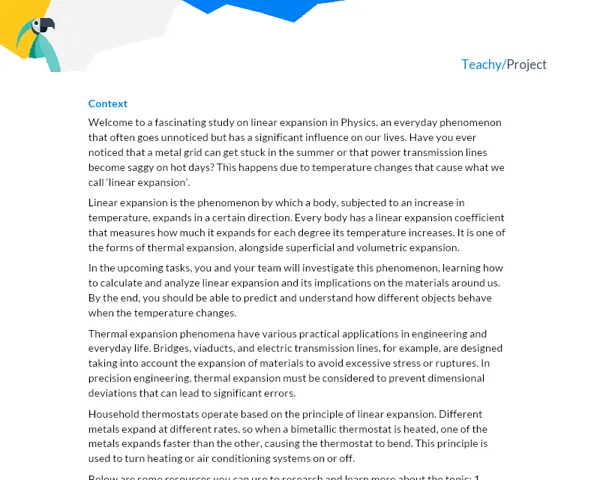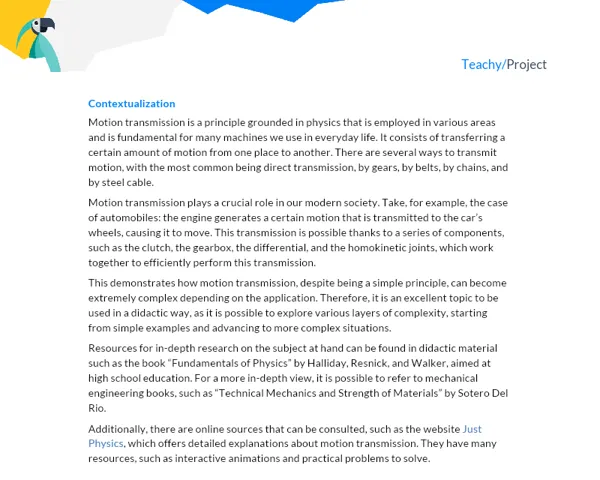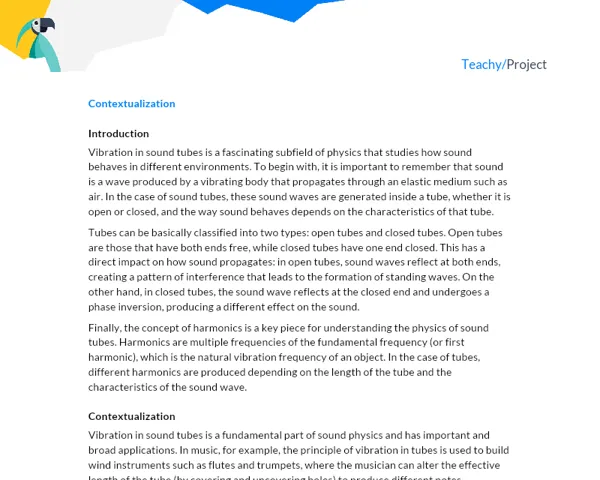Contextualization
Physics is the study of the fundamental properties of nature, and one of its integral parts is the study of trajectory. Trajectory is the path that an object follows when moving from one point to another. This is directly related to vectors, velocity, acceleration, projection, and motion. Understanding trajectory is essential to comprehend how objects move and interact in the world, enabling us to make precise predictions and calculations about these movements.
In trajectory, we study how objects move in relation to time and space. This is one of the foundations of Physics, being an important concept for studying the movement of planets in the universe (astronomical physics) as well as for the launch of a projectile (applied physics). Through the analysis of trajectories, it is possible to better understand the concept of force and the influence of gravity on bodies.
Trajectory is not limited to physics alone: it has applications in many other fields, from engineering to sports. For example, engineers need to understand trajectories to design bridges and other solid and durable architectural projects. In sports, trajectory is essential for calculating the best angle to throw a ball or to predict the path it will take after being thrown or hit.
Introduction
In the project 'Trajectory in Physics,' our goal is to explore in depth the concept of trajectory and understand its main elements. We will explore the relationship between time, velocity, and acceleration, and see how these factors influence the trajectory of an object. Additionally, we will analyze how external forces, such as gravity, affect the trajectory of an object.
To achieve this, we will carry out a series of practical experiments and observations. These activities will allow us to see the theory in action and help us deepen our understanding of the concept of trajectory. Furthermore, we will have the opportunity to work in teams, which will enable us to develop important skills such as communication, problem-solving, and creative thinking.
Activity: Unraveling Trajectory with Projectile Launch
Project Objective
In this project, students will analyze the trajectory of a projectile, more specifically, a water rocket made from a PET bottle. The activity will allow students to understand and visualize the theory of trajectory in physics by getting hands-on experience.
Project Description
The activity will be carried out in groups of 3 to 5 students, and each group will need to build their own water rocket. After construction, the groups will launch their rockets and observe the trajectory followed. They will take measurements and record their observations to analyze the influence of different factors on the trajectory followed by the projectile.
Required Materials
- Empty 2L PET bottles
- Cork
- Air pump (bicycle pump, for example)
- Water
- Pen and paper for notes
Project Steps
-
The first step is building the water rocket. For this, the PET bottle should be filled with water, leaving some empty space for air. The cork should be securely fitted into the bottle's mouth.
-
Connect the air pump to the cork. Ensure the connection is secure and there is an airtight seal, as this is important for conducting the experiment.
-
Find an open area to conduct the experiment. Position the bottle with the mouth part facing downwards and start pumping air into the bottle.
-
With a group member ready to make observations and take notes, launch the rocket. Record information such as the maximum height reached, flight time, horizontal distance traveled, and any other notable details.
-
Repeat the experiment by varying the amount of water in the bottle and observe the changes in trajectory. The observations should be recorded for further analysis.
Final Product and Connection to Activities
After completing the practical part of the project, students should write a report detailing their findings. The report should include:
-
Introduction: Provide context on the trajectory theme, its relevance, and real-world applications. Also, describe the objective of this project, which is to observe and analyze the trajectory of a projectile, in this case, the water rocket made from a PET bottle.
-
Development: Describe the theory of trajectory and how it applies to the water rocket. Detail the experiment, including the construction of the rocket, the launching process, and the observations made. Present and discuss the observed results, relating them to the theory of trajectory. Describe the methodology used to conduct the project.
-
Conclusion: Summarize the main points of the project, highlighting the learnings obtained. Conclude with an analysis of how the experiment helped understand and visualize the theory of trajectory.
-
Bibliography: Cite all sources used to develop the project, including books, websites, videos, and other resources.
The report will be the most important part of the final evaluation, as it will demonstrate the students' understanding of the trajectory topic, their written communication skills, and their ability to work in a team to carry out the project.



